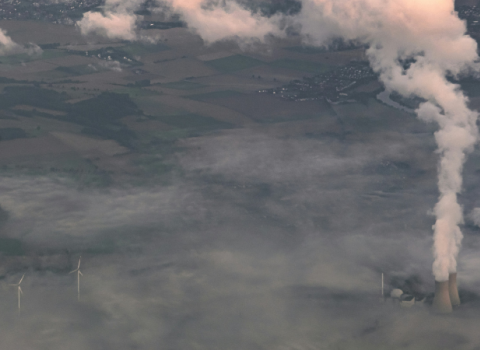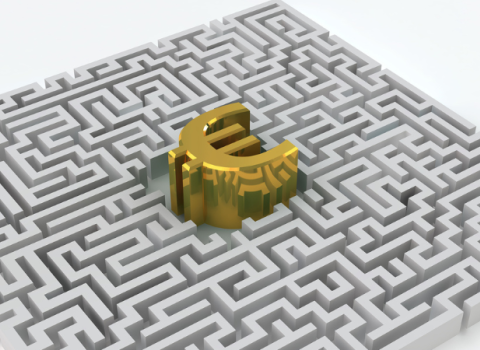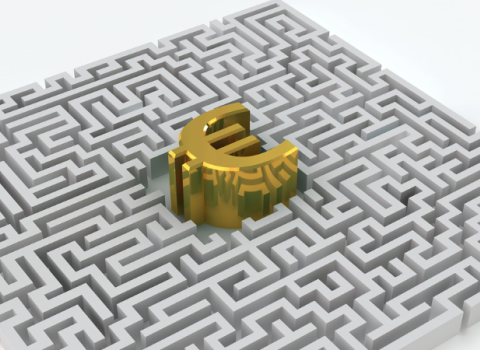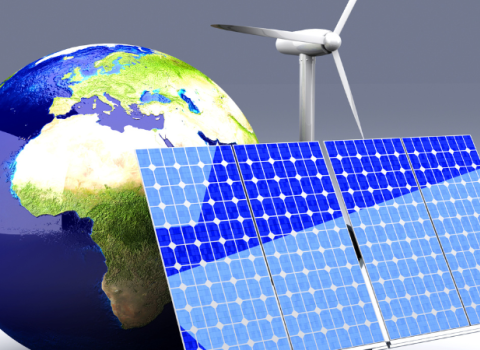Germany’s ambitious Energiewende made it the world’s largest energy lab. But with CO2 emissions up and electricity prices rising, the programme’s value as a blueprint for others is limited, says Stephan Reimelt, president and CEO of GE Energy, Germany.
The world has been watching closely since Germany first launched its Energiewende, or energy transition, back in 2011.
The policy, which rejects nuclear energy completely and aims to generate 80 per cent of the country’s electricity from renewable sources such as wind and solar by 2050, was widely viewed as one of the boldest such transitions ever attempted, and a possible blueprint for others looking to cut greenhouse gas emissions, enhance energy security, and boost energy efficiency.
Just four years later, however, a flagship programme has turned into one of the German government’s biggest headaches.
Instead of falling, CO2 emissions are actually up by 2 per cent. The distribution grid is under significant strain, especially in the south of the country. And despite €20 billion in annual subsidies for renewables, German consumers are paying almost twice as much for electricity as they did in 2000: the highest prices in Europe.
Meanwhile wholesale electricity prices have fallen, undermining traditional fossil fuel generating companies, and Germany’s large industrial users of electricity, such as its chemical sector, are concerned about guaranteeing the supplies they require.
In the face of these pressures, the German government this month agreed reforms to the Energiewende, to slow the growth of green energy.
Doing the right thing?
“The Energiewende has deteriorated into a cost discussion,” says Stephan Reimelt, president and CEO of GE Energy, Germany. “Consumers are asking if we’re doing the right thing.” And unless the government can prove to the people paying the bills that their sacrifices are worthwhile—and quickly—he believes the Energiewende risks losing public support.
Complicating the challenge is the fact that thanks to Germany’s federal structure of 16 state governments, there are, in effect, 16 Energiewende. “That always leads to compromises,” notes Reimelt, “but there will be some tough calls.”
In the end, however, he believes, “It’s a communication issue. We have to show the light at the end of the tunnel. Our achievements have to be measurably smart, and relate very strongly to what was promised”.
Managing intermittent supplies
Can Germany do it? Reimelt reckons there are plenty of grounds for optimism. “We already generate 25 per cent of our energy from renewables, we’re a very advanced country, and we’ve learned a lot,” he observes. But in order to overcome the ongoing challenges of energy storage and distribution, “We have to harmonise our centralised old systems with decentralised new ones.”
Right now, for example, Germany produces a lot more energy than it needs—generating an excess of roughly 100 gigawatts, according to Reimelt. What’s more, when the wind stops blowing or the sun stops shining, the country is forced to fall back on fossil fuel plants for power generation.
In Reimelt’s view, Germany needs to enhance investment in the distribution grid. But currently, he says, despite a long-term trend to decentralisation, “Neither the generation nor the distribution grid has a business model that supports a decentralised approach.”
More R&D needed
There’s also an urgent need, he believes, for more investment in R&D—and for Germany to find ways of putting its genius for innovation to more practical use in the energy sector. “We sell innovation well,” Reimelt says, “but we’re not very good at mass producing it. We have to find the right balance.”
It is, in any event, time to make the Energiewende a success. “We must focus on the original goals: protection of the climate, security of supply, and competitiveness. If Germany succeeds in concentrating on these original targets, and the Energiewende is driven by innovative technologies, then we can begin to lay the groundwork for shaping the future energy landscape in Germany.”
The policy, which rejects nuclear energy completely and aims to generate 80 per cent of the country’s electricity from renewable sources such as wind and solar by 2050, was widely viewed as one of the boldest such transitions ever attempted, and a possible blueprint for others looking to cut greenhouse gas emissions, enhance energy security, and boost energy efficiency.
Just four years later, however, a flagship programme has turned into one of the German government’s biggest headaches.
Instead of falling, CO2 emissions are actually up by 2 per cent. The distribution grid is under significant strain, especially in the south of the country. And despite €20 billion in annual subsidies for renewables, German consumers are paying almost twice as much for electricity as they did in 2000: the highest prices in Europe.
Meanwhile wholesale electricity prices have fallen, undermining traditional fossil fuel generating companies, and Germany’s large industrial users of electricity, such as its chemical sector, are concerned about guaranteeing the supplies they require.
In the face of these pressures, the German government this month agreed reforms to the Energiewende, to slow the growth of green energy.
Doing the right thing?
“The Energiewende has deteriorated into a cost discussion,” says Stephan Reimelt, president and CEO of GE Energy, Germany. “Consumers are asking if we’re doing the right thing.” And unless the government can prove to the people paying the bills that their sacrifices are worthwhile—and quickly—he believes the Energiewende risks losing public support.
Complicating the challenge is the fact that thanks to Germany’s federal structure of 16 state governments, there are, in effect, 16 Energiewende. “That always leads to compromises,” notes Reimelt, “but there will be some tough calls.”
In the end, however, he believes, “It’s a communication issue. We have to show the light at the end of the tunnel. Our achievements have to be measurably smart, and relate very strongly to what was promised”.
Managing intermittent supplies
Can Germany do it? Reimelt reckons there are plenty of grounds for optimism. “We already generate 25 per cent of our energy from renewables, we’re a very advanced country, and we’ve learned a lot,” he observes. But in order to overcome the ongoing challenges of energy storage and distribution, “We have to harmonise our centralised old systems with decentralised new ones.”
Right now, for example, Germany produces a lot more energy than it needs—generating an excess of roughly 100 gigawatts, according to Reimelt. What’s more, when the wind stops blowing or the sun stops shining, the country is forced to fall back on fossil fuel plants for power generation.
In Reimelt’s view, Germany needs to enhance investment in the distribution grid. But currently, he says, despite a long-term trend to decentralisation, “Neither the generation nor the distribution grid has a business model that supports a decentralised approach.”
More R&D needed
There’s also an urgent need, he believes, for more investment in R&D—and for Germany to find ways of putting its genius for innovation to more practical use in the energy sector. “We sell innovation well,” Reimelt says, “but we’re not very good at mass producing it. We have to find the right balance.”
It is, in any event, time to make the Energiewende a success. “We must focus on the original goals: protection of the climate, security of supply, and competitiveness. If Germany succeeds in concentrating on these original targets, and the Energiewende is driven by innovative technologies, then we can begin to lay the groundwork for shaping the future energy landscape in Germany.”





 A unique international forum for public research organisations and companies to connect their external engagement with strategic interests around their R&D system.
A unique international forum for public research organisations and companies to connect their external engagement with strategic interests around their R&D system.